The Supreme Court and Religious Liberty
How a 1990 decision has come back to haunt us, and how its damage might be undone.
Oct 9, 2010, Vol. 16, No. 05 • By ALLEN D. HERTZKESingle Page
Larger Text
Smaller Text EmailHide To forward this article to a friend, please fill out the form below:
* Required Fields
Your Name: * Your Email: * Your Friend's Name: * Your Friend's Email: *
AlertsHide Get alerts when there is a new article that might interest you.
Send me alerts when: Fred Barnes
Bill Kristol Scrapbook
Breaking Commentary Your e-mail address: Please sign me up for The Weekly Standard weekly newsletter. As the Supreme Court enters its new session this month, no issue looms as large as religious liberty in America. At the end of its last session, the Court, in an unprecedented and potentially devastating blow to the first freedom, denied the right of a voluntary Christian organization to determine religious standards for its membership at a public university. On June 28, by a 5-4 vote, the Court ruled in Christian Legal Society v. Martinez that the University of California’s Hastings College of Law could deny recognition to the group because it restricted membership to those who adhered to its principles.
 Much media commentary on the case suggested that the Christian Legal Society (CLS) was denied school recognition because it excluded gays and lesbians from membership. That is inaccurate. CLS bylaws restricted voting and leadership to those willing to sign a statement of faith affirming their commitment to live according to Christian beliefs and principles, one of which was to refrain from sexual intimacy outside of marriage understood as the sacred union of husband and wife. Thus, celibate gays and lesbians who affirm Christian doctrine could be voting members, elected leaders, or Bible study instructors, while heterosexual students who reject the doctrine of sex only in marriage could not. In other words, CLS was affirming a viewpoint: its understanding of Christian discipleship.
Much media commentary on the case suggested that the Christian Legal Society (CLS) was denied school recognition because it excluded gays and lesbians from membership. That is inaccurate. CLS bylaws restricted voting and leadership to those willing to sign a statement of faith affirming their commitment to live according to Christian beliefs and principles, one of which was to refrain from sexual intimacy outside of marriage understood as the sacred union of husband and wife. Thus, celibate gays and lesbians who affirm Christian doctrine could be voting members, elected leaders, or Bible study instructors, while heterosexual students who reject the doctrine of sex only in marriage could not. In other words, CLS was affirming a viewpoint: its understanding of Christian discipleship. Related Stories
Update from the Kelo Front
More by Allen D. Hertzke
The Court’s decision is a multiple blow: to religious liberty, freedom of association, and free expression. While some have proposed a targeted legislative remedy—a law denying federal funds to schools that restrict students’ freedom of association and expression—the case has implications far beyond the rights of campus groups. Indeed, the ruling signals that the feared collision between politically correct policies and religious freedom is upon us. It is of a piece with other growing threats to religious autonomy and rights of conscience produced by the fusion of the regulatory state with an elite culture increasingly indifferent or hostile to religion.
But here is where an ironic backstory comes into play. Conservatives unquestionably are the most vigorous defenders of religious autonomy today. Yet it was the Court’s conservative leader, Antonin Scalia, who two decades ago led the way in eliminating a key lever that CLS could have powerfully invoked: the legal doctrine that infringements on religious freedom be treated by the Court with “strict scrutiny.” Recovering this standard may be the best—and in an era of liberal jurisprudence perhaps the only—way to stem the coming judicial onslaught against the free exercise of faith.
The facts of the current case illuminate the growing threat to religion from elite secular institutions. The Christian Legal Society is a nondenominational organization of Christian law students, lawyers, and judges with chapters at 165 law schools. In 2004, it applied to be a registered student organization at Hastings, along with 60 other student groups representing Hispanics, blacks, Jews, Muslims, Vietnamese, Democrats, Republicans, feminists, and advocates for various causes—pro-life, pro-choice, environmental protection, animal rights, various constitutional schools of thought, and so on. Without official registration a club is hampered in its ability to recruit members, announce events, and hold meetings on campus. In 1972, the Court held that such denial on the basis of viewpoint is unconstitutional (though back then the excluded club was the fashionably radical SDS).
In its nearly century-and-a-half history, Hastings has denied registration to exactly one group: the Christian Legal Society. The school initially justified its stance by claiming that the bylaws of CLS discriminated on the basis of religion and sexual orientation and thus violated the school’s policy to not “discriminate unlawfully on the basis of race, color, religion, national origin, ancestry, disability, age, sex, or sexual orientation.” CLS requested an exemption, which the school denied. CLS then sued Hastings on the grounds that the denial of recognition violated the organization’s First Amendment rights to speech, assembly, and religious expression. In an ominous sign of judicial disregard for religious liberty, CLS lost at both the district and circuit court levels before gaining a Supreme Court hearing.
Recognizing the import of the case, a broad array of religious and civil liberties groups joined in amicus briefs on behalf of CLS. These included the U.S. Conference of Catholic Bishops and groups representing evangelicals, Jews, Sikhs, Muslims, and black and Hispanic Christians. The briefs on behalf of CLS were compelling and often passionate. The officers and past presidents of the Evangelical Theological Society argued that forcing religious groups to admit persons who do not share the faith “will allow every public college and university in the United States to exclude all evangelical Christian organizations.” Agudath Israel of America warned that affirming the lower court decision against CLS would “point a judicial dagger at the heart of the Orthodox Jewish community in the United States.” CLS even gained support from the libertarian group Gays and Lesbians for Individual Liberty, which argued that the right of association is a crucial resource for “dis-favored and disenfranchised minority groups”—indeed, that it is pivotal for gay rights—and that Hastings’s policy of “compulsory association” was “both self-defeating and unconstitutional.”
Advocates International, a global network of Christian lawyers, cautioned, further, that a judgment against CLS would undercut the fight against persecution around the world in the face of the growing tendency of governments to muzzle religious people. And it would put the United States in the perverse position of undermining at home the rights of expression, association, and religion enshrined in the Universal Declaration of Human Rights that Americans championed at the end of the Second World War.
Related Stories
Update from the Kelo Front
More by Allen D. Hertzke
As the case moved through the stages of litigation, it became clear how disingenuous Hastings officials had been in claiming they applied the same standard to all groups. Justice Alito devastatingly showed in his dissent that school administrators went through legal contortions to justify their singular rejection of CLS. They initially invoked California’s nondiscrimination policy, apparently applying it for the first time against a voluntary student group for religious and sexual-orientation discrimination. After CLS sued the school, charging that this odd interpretation of “nondiscrimination” would perversely discriminate on the basis of religion and viewpoint, the school suddenly discovered an “all comers” policy, which required all student groups to admit any applicant. But up to that point, numerous clubs had openly and reasonably restricted membership to those who adhered to their principles. And only after CLS sued did the law school instruct certain groups, such as La Raza, which restricted membership to Hispanics, to change their bylaws to allow “all comers.”
Michael McConnell, a former circuit judge and constitutional scholar now at Stanford, who presented the oral case for CLS to the Supreme Court, emphasized the absurdity of forcing groups to accept members hostile to their core principles or message. Under a true “all comers” policy Democrats would have to accept Republicans, Jews Holocaust deniers, and African Americans racists. Remarkably, to defend its supposed all-comers policy, the school’s acting dean, at one point in the litigation process, conceded that a black student organization must admit white supremacists. When CLS challenged the constitutionality and plausibility of an “accept-all-comers” policy, however, the school clarified its position yet again. This time it granted that, while a student organization could not deny membership to those who wished to change the group’s “message,” it could prohibit students seeking its “demise” by hostile takeover (good luck figuring out those boundaries). Alito described this third iteration as an “accept-some-dissident-comers” policy.
Why would Hastings twist itself into knots, and repeatedly dodge common sense, to exclude a single voluntary student group with seven—yes, seven—members? Apparently, traditional biblical teaching on sexual morality is the one unacceptable viewpoint, which makes risible the school’s claim that its policy is intended to ensure and foster a wide “diversity of viewpoints” and “the highest standards of . . . freedom of expression.”
This case split the Court along predictable lines, with the four conservative justices—Alito, Roberts, Scalia, and Thomas—finding in favor of the Christian Legal Society. It is a sad commentary that so few liberal jurists today understand the need to defend the religious liberty that is central to our national heritage. This is doubly disturbing because conservatives have not always been the greatest defenders of expansive religious liberty—which takes us back to what Scalia wrought two decades ago. A number of us predicted that Scalia’s fateful reasoning in Employment Division v. Smith (1990) would come to haunt the Court. It has, and it does so now with momentous implications.
To understand the links between the Christian Legal Society case and the Smith decision requires a brief excursion into the modern Court’s treatment of the First Amendment’s guarantee of free exercise of religion. Ever since the 1940s, when the Supreme Court began applying the amendment’s religion clauses—“Congress shall make no law respecting an establishment of religion, or prohibiting the free exercise thereof”—to state and local actions, fierce debate and contestation have marked its tortured and sometimes perverse applications of the establishment clause. But what has received too little recognition is that the Court developed a relatively coherent, expansive, and popular doctrine to apply the free exercise clause.
Haltingly at first, then with increasing clarity, the Supreme Court extended generous protection for believers, religious minorities, and unpopular sects. It did so by implicitly anchoring religious liberty in the universal human need—and right—to fulfill mandates of conscience, especially transcendent obligations to God. As Cardinal Newman put it, conscience “has rights because it has duties.”
Related Stories
Update from the Kelo Front
More by Allen D. Hertzke
William Galston, one of the best liberal defenders of religious freedom today, illustrates this incipient understanding in his analysis of the flag salute cases of the 1940s that inaugurated modern free exercise jurisprudence. Jehovah’s Witnesses sought to have their children exempted from a school board-mandated Pledge of Allegiance, on the ground that it amounted to a form of idolatry forbidden by their faith. The Supreme Court originally came down 8-1 against the Witnesses in Minersville v. Gobitis (1940), producing immediate harm to the community with numerous children harassed, suspended, or removed to expensive private schools. But scholars at the time saw the wider threat to religious freedom of Justice Felix Frankfurter’s infamous dismissal of religious conscience claims in that case, especially with the growing reach of the regulatory state. When the Supreme Court dramatically reversed itself three years later in West Virginia v. Barnette (1943), it signaled that the abridgement of conscience need not be, as Galston put it, “unfortunate collateral damage” of law, that the state could pursue its purposes in ways that minimize the burden on religious practice. This is the principle that Justice Scalia, Frankfurter’s heir, seemed to deny.
The Court articulated its expansive free exercise doctrine in Sherbert v. Verner (1963), ruling in favor of a Seventh Day Adventist who had been fired and denied workers compensation for refusing to work on Saturday, her Sabbath. Here the Court explicitly employed the standard—“strict scrutiny”—that it had developed to adjudicate cases involving governmental threats to fundamental rights, like freedom of speech or assembly. To apply strict scrutiny, the Court fashioned its so-called “compelling state interest” test to judge whether laws or regulations needlessly burden religious practice. Specifically, the Court required that all levels of government show that substantial burdens on religious freedom were “the least restrictive means of achieving some compelling state interest.” Under this test, the government could not simply show a “plausible” or “rational” objective when its laws burdened religious liberty. The government’s goal must be fundamentally important, even necessary, and in meeting that goal it must burden religious practice as little as possible.
The Court applied this standard in another landmark case, Wisconsin v. Yoder (1972), ruling that the Wisconsin law mandating that Amish attend school beyond the eighth grade would undermine the way of life of this religious minority. The Court did not strike down an otherwise valid law; it simply required that an exemption be granted to a religious community uniquely threatened by its application. In making its decision, the Court reiterated that it will not permit encroachments on religious liberty, even by neutral laws of general applicability, unless required by compelling governmental interests “of the highest order.”
Compelling state interest was the Court’s free exercise standard for nearly three decades, providing grounds for litigants to gain legal exemptions or, more often, reasonable accommodations in the application of bureaucratic mandates. Generally, the state prevailed when public health and safety were at stake. Thus, children have been required to receive inoculations even when parents sought exemption on religious grounds. On the other hand, religious claimants often gained relief when accommodating their beliefs did not seem to contravene any compelling governmental interest or when remedies were readily available. A public school, for example, could reasonably accommodate a student who felt traditional gym clothes violated her church’s teaching against immodest dress.
The apparently settled nature of free exercise law was shattered when the Supreme Court departed from prior decisions in Employment Division of Oregon v. Smith (1990). The Smith case involved two Native Americans who sought unemployment benefits from the state of Oregon after being fired from jobs at a drug rehabilitation clinic for using peyote, a hallucinogen, as part of a traditional Indian religious ritual (Oregon provided no statutory exemption from drug laws for sacramental use). The Court could have decided narrowly in favor of Oregon on the grounds that a compelling state interest required the state to uphold its criminal drug statutes. Instead, Justice Scalia shocked legal scholars and religious leaders across the political and theological spectrum by striking at strict scrutiny itself.
In his majority opinion, Scalia argued that religious practices are not exempt from neutral and generally applicable laws unless legislators write those exemptions into law. At one level this rationale conformed to Scalia’s characteristic deference to legislative will. Religious accommodations are a legislative, not judicial, prerogative. But a deeper reading of his decision indicates something more troubling: the denial that even the most profound religious conscience claims need to be accommodated by authorities. Indeed, Scalia approvingly quotes Frankfurter’s statist reasoning in Gobitis that conscience claims must never be allowed to trump state policy—failing to note, famously, that Gobitis had been overturned. Scalia feared that applying strict scrutiny to all public policy “would be courting anarchy” because many laws in fact “will not meet the compelling interest test.” Thus, forcing judges to weigh the importance of laws against religious beliefs is a “luxury” we “cannot afford.”
To Scalia, eschewing compelling-interest scrutiny would disadvantage only those “religious practices not widely engaged in.” But without realizing it, he sent a chilling message to governmental actors at all levels: You need not accommodate believers whose ultimate obligations to God collide with your bureaucratic edicts. As Douglas Laycock has demonstrated, the Smith ruling profoundly undercut the practical negotiating leverage of religious citizens confronting government bureaucrats.
The sweeping judgment in Smith troubled Justice Sandra Day O’Connor, who joined in the majority decision but argued later, in her dissent in City of Boerne v. Flores (1997), that the ruling was “wrongly decided” and cited numerous Court interpretations of the free exercise clause that were “gravely at odds” with Smith. She noted that, contrary to the “parade of horribles” Scalia conjured to justify abandoning strict scrutiny, “the courts have been quite capable of striking sensible balances between religious liberty and competing state interests.” Thus she recommended retaining strict scrutiny because laws of general applicability can infringe on religious practice just as severely as those that overtly target faith.
The ruling galvanized virtually the entire American religious landscape, in part because every faith can envision itself as a vulnerable minority in some situation. But more than this, every congregation, every religious group, every social ministry, every parochial school, every religious institution can imagine instances where the regulatory application of supposedly neutral laws would burden its freedom, conscience, and autonomy, especially if regulations were administered by officials indifferent or hostile to minority faiths or religion in general.
Scalia argued that, outside of “hybrid” circumstances, the Court had never granted exemptions from otherwise valid secular laws. The religious community thought other-wise, and Scalia’s attack on judicially accessible accommodations sparked a remarkable alliance, one that successfully pressed Congress to restore the compelling state interest test.
The congressional campaign was a sight to behold. The American Civil Liberties Union lobbied alongside the Traditional Values Coalition, the National Council of Churches with the National Association of Evangelicals, liberal Jews with fundamentalist homeschoolers, Sikhs with Southern Baptists, Mormons with tribal religionists, Muslims with Catholics, all united in their attempt to recover the guarantee of religious freedom. All disputed Scalia’s reasoning, and they presented meticulous documentation of numerous cases in which reasonable accommodation of religious people had been denied by public entities or summarily thrown out by courts following the Smith precedent.
The legislative result was a model of democratic process: A threat to fundamental rights produces a popular groundswell, eloquently articulated by a mighty coalition, which forges a consensus behind a congressional remedy, a carefully crafted law to which the courts will presumably defer. The Religious Freedom Restoration Act (RFRA) states that “government shall not substantially burden a person’s exercise of religion even if the burden results from a rule of general applicability,” unless that rule employs the “least restrictive means of furthering” a “compelling governmental interest.” The law was passed almost unanimously by Congress and signed into law by President Clinton on November 16, 1993, in the presence of some 200 religious leaders.
An enthusiastic supporter of the legislation, the president called the bill “the most historic piece of legislation dealing with religion in our lifetime” because it was designed to “protect perhaps the most precious of all American liberties—religious freedom.” Praising the coalition for its central role in drafting and doggedly working for the passage of the bill, Clinton also said:
Usually the signing of legislation by a president is a ministerial act, often a quiet ending to a turbulent legislative process. Today, this event assumes a more majestic quality because of our ability together to affirm the historic role that people of faith have played in the history of this country and the constitutional protections those who profess and express their faith have always demanded and cherished.
Vice President Gore added, “We want Americans free to practice religion not as government sees fit, but as they see fit.”
Congress acted out of its authority under Section 5 of the Constitution’s Fourteenth Amendment, which gives Congress the power to “enforce” the rest of the amendment’s provisions. These include the constitutional guarantee that no state may deprive any person of “life, liberty, or property without due process of law,” which the Supreme Court has interpreted as “incorporating” state-level actions under the umbrella of the Constitution’s religion clauses.
But just four years after the enactment of RFRA, the Supreme Court struck down its core in Boerne v. Flores (1997). That case involved a Catholic Church in Boerne, Texas, that outgrew its building and sought a permit to expand. The Boerne City Council, citing historic preservation, denied the application. The archbishop challenged the city government in federal court, claiming religious freedom trumped local preservation ordinances under RFRA. The Court responded by holding RFRA’s application to state and local governments unconstitutional, claiming that Congress had not merely “enforced” provisions of the Fourteenth Amendment but instead had attempted to “define” what the amendment means, which the Court said was its prerogative.
In the face of broad public support for expansive guarantees of religious freedom, the Supreme Court, in effect, insisted on a more pinched interpretation. Except to repel direct legislative attacks on religion, the First Amendment’s guarantee of free exercise became a nullity.
In the wake of Boerne, activists and legal experts sought an alternative congressional remedy, the Religious Liberty Protection Act, which relied this time on congressional spending leverage to restore compelling-interest jurisprudence. But after passing the House in 1999, the bill faltered in the Senate when liberal civil liberties and gay rights groups expressed fear that it would undercut antidiscrimination policies on sexual orientation. This failure at the federal level led 25 states to reestablish heightened scrutiny—in effect rejecting the Smith rationale—either through legislation or state supreme court rulings. But this eloquent evocation of public will still leaves us with a patchwork of protections vulnerable to continued erosion without decisive Supreme Court action.
Since the Smith decision, a number of eminent legal scholars sympathetic to religion, such as Gerald Bradley and Philip Hamburger, have argued that the case was in fact rightly decided. Implicitly they accept Scalia’s contention that few exemptions were actually granted before Smith, that all the Sturm und Drang is needlessly alarmist. But the rapid sequence from Smith to RFRA to Boerne produced that rare phenomenon in the social world, a natural experiment, allowing us to compare what jurisprudence is like without the compelling interest standard (after Smith, 1990-93), and with it reinstated (after RFRA, 1994-97).
The results of the experiment are compelling. The scholars John Wybraniec and Roger Finke systematically analyzed more than 1,300 court cases at all levels involving free exercise claims from 1981 to 1996. They found that, before Smith undercut strict scrutiny, religious litigants won favorable decisions in 40 percent of the cases. After Smith, that dropped to 28 percent, but then it rebounded to more than 45 percent after RFRA was enacted. In brief, following the Smith decision, governmental interest overwhelmingly trumped free exercise claims; after RFRA, religious litigants gained more relief (hardly the “anarchy” Scalia predicted).
Court cases alone, moreover, do not account for the profound shift in negotiating strength at the day-to-day level, where the free exercise claimant encounters a nonaccommodating bureaucrat. Under the shield of compelling interest, many disputes never reached the courts because the threat of litigation forced authorities to accommodate religious claimants. Shorn of this protection, religious claimants no longer have the leverage to shield the imperatives of their faith, or the autonomy of their institutions, from intrusive government regulations. Consider:
- In 2007 the Texas city of Leon Valley, striving to maximize revenues, revised its zoning codes to exclude churches from most of the city and barred the Sunday worship services of a small congregation that had recently bought an existing church building.
- Beginning in 2006, officials in Morristown, New York, began zealously prosecuting Amish families for failure to comply with building codes that Amish say violate their religious tenets. So far 11 Amish men have been prosecuted after building their houses in traditional fashion and a twelfth has been charged.
- Christian Scientists fought for nearly two decades to obtain a permit from the District of Columbia to tear down a monstrously ugly concrete building, but were denied because historic preservationists declared the edifice an excellent example of “Brutalist” architecture.
- In 2006 Catholic Charities of Boston, which specialized in finding homes for hard-to-place children, closed its adoption program because it insisted on operating in conformity with Catholic teaching about marriage. In order to receive a state license, Catholic Charities would have had to place children with same-sex couples. Its efforts to secure a conscience exemption from the legislature failed.
- In 2008, a New Mexico photographer who told a gay couple that she photographed only traditional marriages lost a lawsuit before the State Human Rights Commission, which fined her nearly $7,000.
- In 2009, the U.S. Equal Employment Opportunity Commission ruled that Belmont Abbey College in North Carolina violated discrimination laws by not providing contraceptives in its health plan. The president of the university said he will be forced to close the school if the ruling is sustained.
- In 2008, the California supreme court denied the right of individual physicians, guided by religious convictions, to provide in vitro fertilization only to married patients.
- In 2008, Montana district judge Dorothy McCarter ruled that assisted suicide was a fundamental right, thus requiring health care providers to provide euthanasia when a patient requests it.
- A 2007 New Jersey law requiring pharmacists to dispense abortifacients included no conscience exemption, so if individual druggists attempt to adhere to their religious convictions by referring customers to other vendors, they can be fired.
- In 2009 a family court in Laconia, New Hampshire, ordered a Christian mother to stop home schooling her daughter, who was excelling in a curriculum approved by the school district, because she “appeared to reflect her mother’s rigidity on questions of faith.”
And so it goes.
Scalia’s remedy—explicit legislative exemptions—is mostly illusory. Not even the most prescient lawmaker can foresee the limitless ways regulatory bodies, educational institutions, public commissions, and judges will interpret and apply statutes.
Those who agree with the Smith decision make the case that key Founders, such as James Madison, did not see the Free Exercise clause of the First Amendment as requiring religious exemptions from otherwise valid secular laws. And there is decent evidence for this claim. Vincent Phillip Munoz documents that, much as they differed on religion, Madison, Washington, and Jefferson did not envision such exemptions from general laws.
What none of the Framers could have imagined, however, is the rise of our vast regulatory regime. As extensively documented by political scientists, legislatures at all levels in the modern era have ceded enormous discretion to regulatory bodies, whose ambit reaches into every nook and cranny of societal life. Thus, it is often not the general law that is bothersome to religious persons and institutions, as Frankfurter and Scalia contend, but the interpretation of the law by a host of regulatory agencies, boards, equal opportunity commissions, and educational institutions. This powerful, unelected arena of government is disproportionately run by bureaucratic elites ignorant of the burden placed on believers or skeptical of the value of religious civil society.
Nowhere is this more evident than in the looming train wreck between gay marriage and religious freedom, made imminent by the recent court challenge to California’s marriage law. To be clear, the principal threat comes from the radical redefinition of marriage—as opposed to various civil union provisions—because marriage between husband and wife is uniquely embedded in religion, law, and custom as the foundation for societal regeneration and human flourishing. Yet to many in the intelligentsia, the only possible explanation for opposition to marriage rights for homosexuals is bigotry. If that revolutionary view is enshrined in law, ancient cross-cultural understandings of marriage as part of the divine order—not to mention centuries of English legal tradition upholding the state’s vital interest in supporting stable procreative marriages—will suddenly become illegitimate and subject to legal sanction.
In a landmark volume on the subject sponsored by the Becket Fund for Religious Liberty, Marc Stern, formerly of the liberal American Jewish Congress, meticulously catalogues how law will undercut religious freedom if same-sex marriage is widely adopted or, more likely, imposed by the courts without any provision for religious exemptions. In a remarkably dispassionate tone, Stern analyzes the welter of federal and state statutes, judicial rulings, and regulations on civil rights, harassment, public accommodations, commercial licenses, professional codes, government contracts, service vendors, reproductive technologies, student speech codes, and housing access. Though sympathetic to gay rights and supportive of laws enabling couples to organize their shared lives, Stern reaches a sobering conclusion: Once same-sex marriage is codified in law, this whole governmental apparatus will come down on dissenters—especially orthodox Jews and Christians and their institutions—and there will be little that can be done to ameliorate the effect. The freedom to affirm and to live in accordance with the biblical view of marriage—the view held by the Founders and by most Americans through the centuries—will have been profoundly diminished.
Against this formidable threat, the constitutional doctrine of strict scrutiny provides the most effective shield for believers unwilling to compromise duties they see as transcendent and for religious institutions determined to defend their autonomy. Given the manifest peril, it’s worth investigating new legislative remedies, however daunting the prospects.
But legal theorists and jurists also must take a fresh look. In the current environment of growing elite hostility toward religion, the test of compelling interest, which provides robust justification for accommodation of religious practices and institutions, is truer to the spirit of James Madison than putative neutrality. In his famous Memorial and Remonstrance, Madison anchored religious freedom in the “duty towards the creator” that “is precedent, both in order of time and in degree of obligation, to the claims of civil society.” Because of this prior duty, “no man’s right is abridged by the institution of Civil Society.” Because religious liberty is, in this profound sense, the first freedom, a key measure of a free society is the extent to which people are not forced to choose between sacred duties and citizenship obligations.
In his day, Madison thought that the prior “duty towards the creator” would be protected if religion were “wholly exempt” from the “cognizance” of civil society and its law; thus he saw no need for religious exemptions or accommodations. In the contemporary environment, however—where zoning boards prevent church construction, where the Amish can’t build their houses in accordance with their faith, where abortion rights trump religious conscience, where support for traditional marriage is equated with bigotry—avoiding “cognizance” of religion in the supposedly neutral application of secular laws will eviscerate religious liberty. In the regulatory age, the compelling interest justification properly recognizes religious liberty as a fundamental right, forged in the crucible of the nation’s social compact.
Now for an intriguing coda to our tale. The Supreme Court majority in Christian Legal Society v. Martinez left open the possibility that CLS, on remand to lower courts, could challenge the school’s fairness in applying its “all comers” policy. Thus, the case could come back before the High Court, this time on the basis of facts that would allow the justices to take a second look. If there is a glimmer of hope that the Court will reconsider the broader problem of how laws and bureaucratic edicts can burden religious free exercise, it comes from an ironic source: the newly seated justice, Elena Kagan.
As associate counsel in the Clinton White House, Kagan responded to a call from Steve McFarland, then lead counsel for the Christian Legal Society, about a 1996 case in which the California Supreme Court had contravened the intent of the Religious Freedom Restoration Act by rejecting a reasonable religious exemption. The case was brought by a landlady who refused to rent to unmarried couples because that would make her, according to her faith, complicit in their sin. She sought relief from a Housing Commission regulation that prohibited discrimination on the basis of marital status. The California court held that, because she could make money another way (in other words, get out of the rental business), her religious exercise was “not burdened.”
Kagan wrote that this reasoning was “quite outrageous.” Furthermore, she wrote, given “the danger this decision poses to RFRA’s guarantee of religious freedom in the State of California, I think there is an argument to be made for urging the Court to review and reverse the decision.” When the Supreme Court subsequently struck down RFRA’s application to the states in Boerne, Kagan described herself as the “biggest fan” in the White House of another legislative remedy to restore strict scrutiny (which unfortunately failed).
What makes Kagan’s apparent sympathy for religious claims intriguing is that the justice she has replaced, John Paul Stevens, was a strong ally of Scalia in striking down grounds for religious accommodation and was generally no friend of religious freedom. Melissa Rogers of the Brookings Institution recently expressed some confidence that, as a critic of the Smith decision, Kagan will nudge the Court toward more vigorous protections of the first freedom. And perhaps even Scalia, now seeing how the Smith rationale threatens principles he holds dear such as the autonomy of religious institutions, will reassess his earlier position.
Allen D. Hertzke is presidential professor of political science at the University of Oklahoma.
.gif)



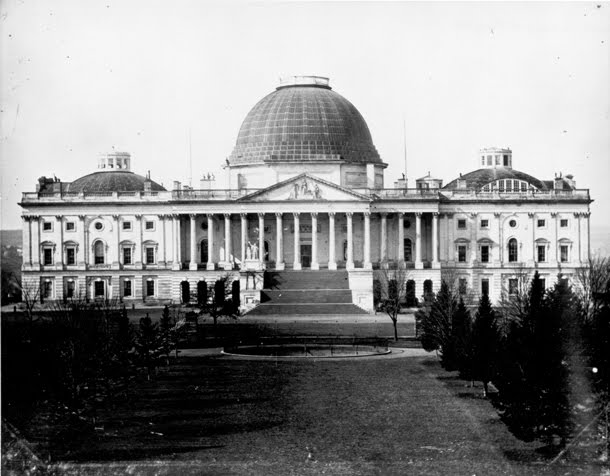









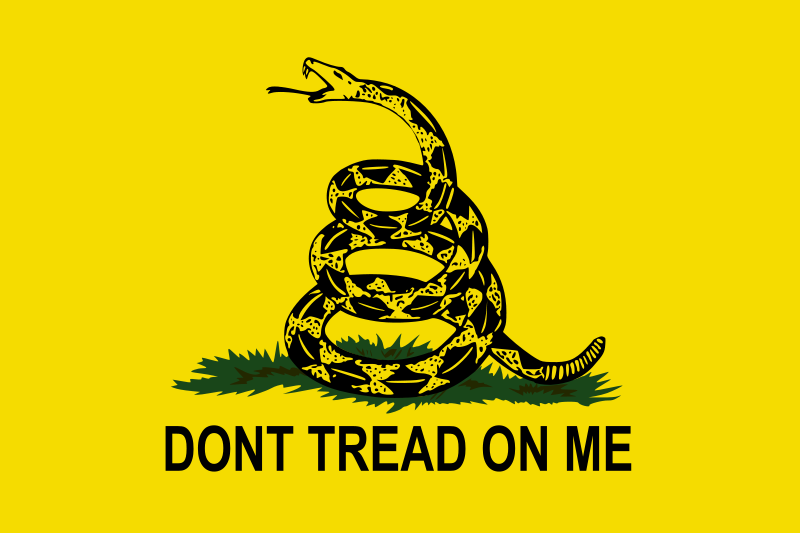
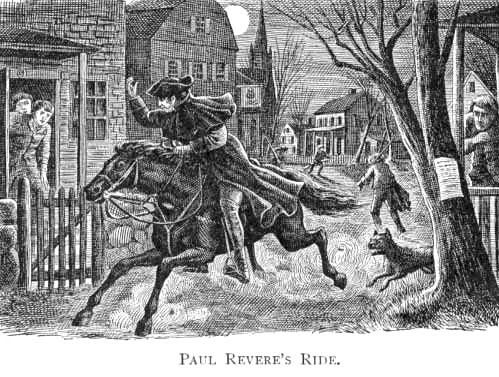

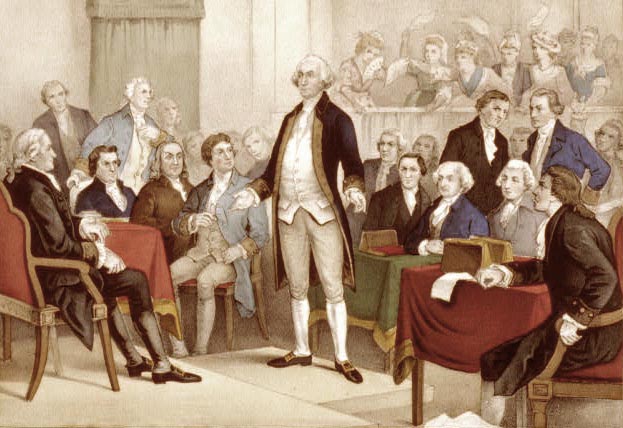

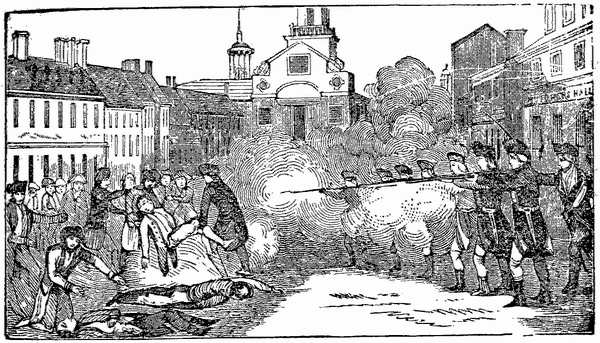
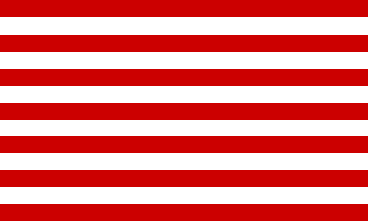
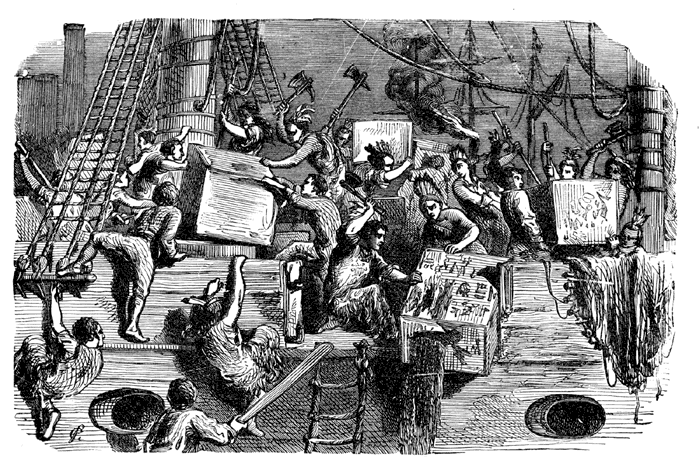




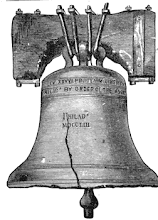




No comments:
Post a Comment